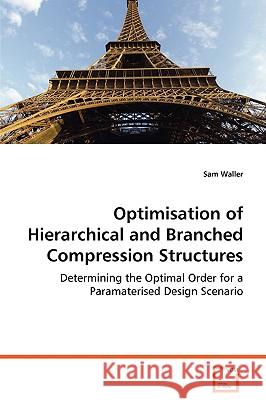Optimisation of Hierarchical and Branched Compression Structures » książka
Optimisation of Hierarchical and Branched Compression Structures
ISBN-13: 9783639070064 / Angielski / Miękka / 2008 / 248 str.
The optimal shape is found for structures that can be characterised by an order of hierarchy or branching (examples of such structures include tower cranes and the Eiffel tower). The objective is to determine the circumstances in which higher order structures become optimal. It is of specific interest whether these solutions change when imperfections are included. For hierarchical structures, imperfections can exist at the local and global scales, and this interaction of imperfections across different orders of magnitude causes a strength reduction that is greatest at the optimal shape found by analysing a perfect structure. It is therefore essential to include the imperfections within the optimisation algorithm, because they change the optimal shape. Branched structures are more resilient to imperfections at the global scale, so the interaction of imperfections is not as severe.
The optimal shape is found for structures that can be characterised by an order of hierarchy or branching (examples of such structures include tower cranes and the Eiffel tower). The objective is to determine the circumstances in which higher order structures become optimal. It is of specific interest whether these solutions change when imperfections are included. For hierarchical structures, imperfections can exist at the local and global scales, and this interaction of imperfections across different orders of magnitude causes a strength reduction that is greatest at the optimal shape found by analysing a perfect structure. It is therefore essential to include the imperfections within the optimisation algorithm, because they change the optimal shape. Branched structures are more resilient to imperfections at the global scale, so the interaction of imperfections is not as severe.











